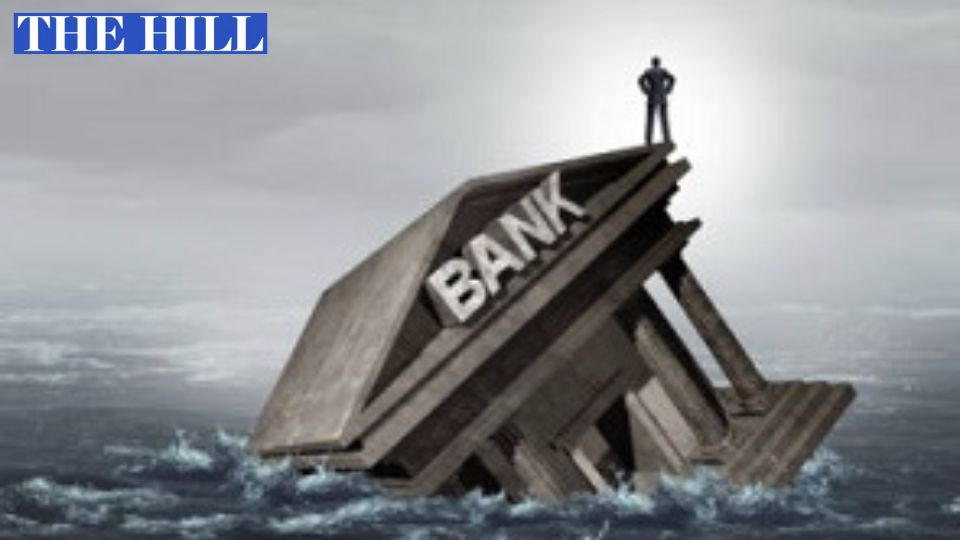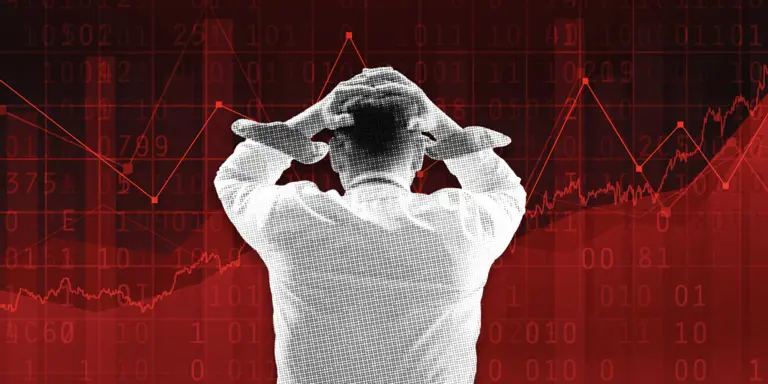- In March 2008, the Fed overlooked the clear signals provided by the Bear Stearns’ failure leading to the Great Economic Recession.
- The Federal Reserve is sticking to its mantra of high-interest rates for longer in order to regain inflation control. By so doing, the Fed risks inviting a financial system crisis next year that could trigger a meaningful economic recession.
- When the easy money stops and lenders realize that they might not get repaid, the whole credit market house of cards collapses.
- According to a recent Social Science Research Network study, the U.S. banking system’s market value of assets today is some $2.2 trillion below its book value.
- Another sign that the credit cycle has turned is the rising defaults in the $1.5 trillion highly leveraged loan market. According to Goldman Sachs, we have already had $24.5 billion of these loans defaulting.
- It is estimated that these loans account for as much as 20 percent of the regional banks’ balance sheet and that more than $500 billion a year in these loans fall due over the next three years.
- Blackstone, the world’s largest commercial property developer - has already walked away from their mortgages. Meanwhile, Morgan Stanley is estimating that commercial property prices in six major U.S. cities could decline by as much as 40 percent.
Hyman Minsky, the late Washington University credit cycle expert, must be rolling in his grave. At a time when there are the clearest of signs that the credit cycle has turned, the Federal Reserve is sticking to its mantra of high-interest rates for longer in order to regain inflation control. By so doing, the Fed risks inviting a financial system crisis next year that could trigger a meaningful economic recession.
Minsky taught that a prolonged period of easy money and financial market stability sets up the conditions for pronounced financial market instability. By this, he meant that as economic confidence rises and asset prices soar in a low-interest-rate world, the financial system tends to make increasingly risky loans on the assumption that asset prices will continue to rise and interest rates will stay low forever. When the easy money stops and lenders realize that they might not get repaid, the whole credit market house of cards collapses.
If ever we have had an abrupt shift from ultra-easy monetary policy to one of tightness, it has to be today. For many years, the Fed kept interest rates at their zero lower bound and allowed the broad money supply to balloon by 40 percent from the beginning of 2020 and the end of 2021. This has been followed by a 525-basis point increase in the Fed’s target interest rate since March 2022 or the fastest pace of increase in 40 years. It has also been followed by a situation where the broad money supply is now contracting at the fastest pace since the Fed started publishing this data in 1959.
Earlier this year, we got the clearest of signs that Minsky’s credit cycle is alive and well when three large regional banks — Silicon Valley Bank, Signature Bank, and First National Bank — failed. These banks failed largely as a result of the Fed’s high interest rates inflicting major damage on their bond portfolios. That in turn prompted a run on their deposits from uninsured depositors who questioned these banks’ solvency. Emergency Federal Reserve intervention has succeeded in stabilizing the situation — at least, for the moment.
Anyone who thinks that interest rate damage to the banks’ bond portfolios will not add further stress to the financial system has not been paying attention to the estimated size of the banking system’s bond portfolio losses as a result of falling bond values. According to a recent Social Science Research Network study, the U.S. banking system’s market value of assets today is some $2.2 trillion below its book value. Nor have they been paying attention to the fact that long-term bond yields have continued to rise to their highest levels since 2007 as the Fed keeps raising interest rates.
Another sign that the credit cycle has turned is the rising defaults in the $1.5 trillion highly leveraged loan market. According to Goldman Sachs, we have already had $24.5 billion of these loans defaulting. That puts us on track for the third worst yearly rate of default on these loans in history. A similar story appears to be unfolding for auto loans and credit card debt.
Of very much more concern has to be the loan trouble brewing in the commercial real property space that is being battered by low occupancy rates in the wake of the COVID pandemic. It is estimated that these loans account for as much as 20 percent of the regional banks’ balance sheet and that more than $500 billion a year in these loans fall due over the next three years.
It is difficult to see how these loans will be repaid in a world of high interest rates and low occupancy rates. As if to underline this point, a growing number of property developers — including Blackstone, the world’s largest commercial property developer — have already walked away from their mortgages. Meanwhile, Morgan Stanley is estimating that commercial property prices in six major U.S. cities could decline by as much as 40 percent.
In March 2008, the Fed overlooked the clear signals of a turn in the credit cycle provided by the Bear Stearns’ failure and the trouble brewing in the subprime market. That trouble led to the September 2008 Lehman crisis and the Great Economic Recession. Today, in its quest to beat inflation at all costs, the Fed seems to be repeating the same mistake of downplaying the building strains in the financial system that are in plain sight.
This makes it all too likely that we will once again pay a heavy economic price for the Fed’s failure to draw the right lessons from financial market history.
American Enterprise Institute senior fellow Desmond Lachman was a deputy director in the International Monetary Fund’s Policy Development and Review Department and the chief emerging-market economic strategist at Salomon Smith Barney.
Story by DESMOND LACHMAN - Redacted bullet points by Jody Davis https://thehill.com/opinion/finance/4212035-is-the-fed-ignoring-signs-of-another-financial-collapse/




